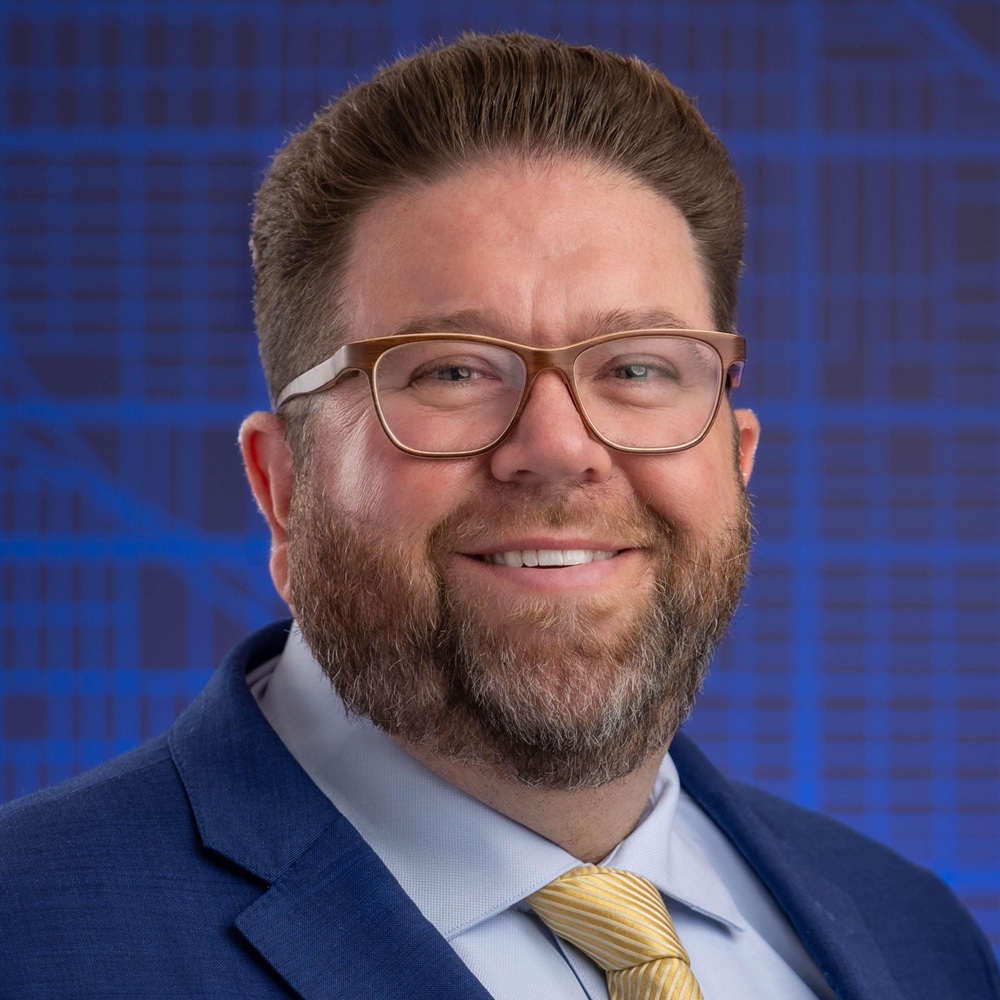3 Money ‘Musts’ for Every One of Us, Inspired by Financial Literacy Month
Now more than ever, those preparing for retirement need to understand their finances and the impact their decisions have on their financial future. Here are three money rules we all should be living by. Are you?


Most Americans believe they are financially literate, but surveys show few actually are. Increasing debt and a lack of retirement savings show there’s a need for financial education. April marks Financial Literacy Month, a time to remind ourselves of healthy financial habits.
No matter your age, a solid financial plan will help you navigate different stages of life. It can help you budget to buy a house, start a family and save for your children’s college education. As you put together your financial plan, consider these three important steps.
1. Manage Your Debt with the Avalanche or Snowball Method
Household debt is at an all-time high, with Americans owing nearly $15 trillion. From credit card debt to student loans and mortgages, every generation is impacted. Americans over the age of 50 hold 22% of all student loan debt — up from only 10% in 2004. Especially during times of economic uncertainty, managing your debt should be a top priority. We advise our clients who are preparing for retirement to wipe out their debt, starting with any high-interest debt, such as credit card debt. Retirees live on a fixed income, and any debt payments have to be factored into their budget.
From just $107.88 $24.99 for Kiplinger Personal Finance
Become a smarter, better informed investor. Subscribe from just $107.88 $24.99, plus get up to 4 Special Issues

Sign up for Kiplinger’s Free Newsletters
Profit and prosper with the best of expert advice on investing, taxes, retirement, personal finance and more - straight to your e-mail.
Profit and prosper with the best of expert advice - straight to your e-mail.
When tackling your debt, there are two popular methods: The avalanche method encourages you to organize your debts by interest rate. You’ll start by tackling the debt with the highest interest rate first. Once that debt is paid off, you’ll move to the next highest interest rate. The snowball method encourages you to organize your debts by the amount you owe. You’ll pay off the debt with the smallest balance first, before moving on to your next smallest balance. With each method, continue making at least the minimum payments on your other debts as you work to pay it all off.
2. Get Serious about an Emergency Fund: Here’s How
If you don’t understand what an emergency fund is or why you need one, now is the time to get serious about starting one. No matter your age or financial situation, an emergency fund is crucial to your financial security. This is money set aside in an easily accessible account, like a money market or savings account, that can be used at any time to pay for the unexpected, such as missing a paycheck, getting laid off or an emergency medical bill. Your emergency fund should have enough cash to cover six months of expenses. Without this safety net, many people are forced to turn to credit cards or even their retirement accounts to help make ends meet. Here’s why those are bad options: Credit cards have an average interest rate of nearly 17%, which means you could be paying off that bill for months. And withdrawing from your retirement account before age 59 ½ can trigger a 10% early withdrawal penalty and put your future retirement at risk.
Emergency funds are important for retirees, too. Health care is one of the biggest expenses retirees face. An unexpected medical bill from a fall or serious diagnosis has to be paid on way or another. If you haven’t factored this into your budget, you could run the risk of running out of money by withdrawing too much from your retirement funds sooner than planned.
If your emergency fund falls short or is nonexistent, start by looking at your budget and finding areas to cut. Put $50-100 aside each week. It may seem easiest to put the money into a savings account you already have open, but instead, open a separate account dedicated solely to your emergency fund. That way it has a purpose and is used only in case of emergency.
3. Set a 15% Goal When Saving for Retirement
From 401(k)s to IRAs and other investment accounts, there are a lot of options when it comes to saving for the future; there are tax-deferred accounts, tax-free accounts and taxable accounts. It’s important to understand how each works and how they can benefit your long-term retirement plan.
Saving in tax-deferred accounts, like a traditional IRA or 401(k), allows you to lower your taxable income now by contributing money pre-tax. That money will then be taxed as you withdraw it in retirement. Money you put into tax-free accounts, like a Roth IRA or Roth 401(k), is taxed now but you do not pay taxes on your withdrawals in retirement; your money also grows tax-free. Taxable accounts include your brokerage and savings accounts. You are taxed on the interest you earn, as well as on any dividends or gains.
If you aren’t sure where to begin, start with your employer-sponsored 401(k); be sure you’re contributing enough to get your full employer match. After doing that, consider opening a Roth IRA to help diversify your tax liability in retirement. Taxable investment accounts are also important. Talk with a financial adviser before investing; you want to be sure your portfolio aligns with your risk tolerance. No matter which combination of accounts you choose, at least 15% of every paycheck should be dedicated to your retirement savings.
These three steps are key to your long-term financial security. If you haven’t already, meet with a financial adviser to put a plan in place. A financial plan will help you navigate different stages of life. While it can help you budget for big expenses like buying a home, it will also outline savings goals to meet as you plan and prepare for retirement.
Profit and prosper with the best of Kiplinger's advice on investing, taxes, retirement, personal finance and much more. Delivered daily. Enter your email in the box and click Sign Me Up.

Tony Drake is a CERTIFIED FINANCIAL PLANNER™ and the founder and CEO of Drake & Associates in Waukesha, Wis. Tony is an Investment Adviser Representative and has helped clients prepare for retirement for more than a decade. He hosts The Retirement Ready Radio Show on WTMJ Radio each week and is featured regularly on TV stations in Milwaukee. Tony is passionate about building strong relationships with his clients so he can help them build a strong plan for their retirement.
-
 Fed's Rate Cuts Could Have Impacts You Might Not Anticipate
Fed's Rate Cuts Could Have Impacts You Might Not AnticipateUnderstanding how lower interest rates could impact your wallet can help you determine the right financial moves to make.
-
 Past Performance Is Not Indicative of Your Adviser's Expertise
Past Performance Is Not Indicative of Your Adviser's ExpertiseMany people find a financial adviser by searching online or asking for referrals from friends or family. This can actually end up costing you big-time.
-
 I'm want to give my 3 grandkids $5K each for Christmas.
I'm want to give my 3 grandkids $5K each for Christmas.You're comfortably retired and want to give your grandkids a big Christmas check, but their parents are worried they might spend it all. We ask the pros for help.
-
 I'm a Financial Adviser: The Fed's Rate Cuts Could Have Impacts You Might Not Anticipate
I'm a Financial Adviser: The Fed's Rate Cuts Could Have Impacts You Might Not AnticipateUnderstanding how lower interest rates could impact your wallet can help you determine the right financial moves to make.
-
 Past Performance Is Not Indicative of Your Financial Adviser's Expertise
Past Performance Is Not Indicative of Your Financial Adviser's ExpertiseMany people find a financial adviser by searching online or asking for referrals from friends or family. This can actually end up costing you big-time.
-
 I'm a Financial Planner: If You're Not Doing Roth Conversions, You Need to Read This
I'm a Financial Planner: If You're Not Doing Roth Conversions, You Need to Read ThisRoth conversions and other Roth strategies can be complex, but don't dismiss these tax planning tools outright. They could really work for you and your heirs.
-
 Could Traditional Retirement Expectations Be Killing Us? A Retirement Psychologist Makes the Case
Could Traditional Retirement Expectations Be Killing Us? A Retirement Psychologist Makes the CaseA retirement psychologist makes the case: A fulfilling retirement begins with a blueprint for living, rather than simply the accumulation of a large nest egg.
-
 I'm a Financial Adviser: This Is How You Can Adapt to Social Security Uncertainty
I'm a Financial Adviser: This Is How You Can Adapt to Social Security UncertaintyRather than letting the unknowns make you anxious, focus on building a flexible income strategy that can adapt to possible future Social Security changes.
-
 I'm a Financial Planner for Millionaires: Here's How to Give Your Kids Cash Gifts Without Triggering IRS Paperwork
I'm a Financial Planner for Millionaires: Here's How to Give Your Kids Cash Gifts Without Triggering IRS PaperworkMost people can gift large sums without paying tax or filing a return, especially by structuring gifts across two tax years or splitting gifts with a spouse.
-
 'Boomer Candy' Investments Might Seem Sweet, But They Can Have a Sour Aftertaste
'Boomer Candy' Investments Might Seem Sweet, But They Can Have a Sour AftertasteProducts such as index annuities, structured notes and buffered ETFs might seem appealing, but sometimes they can rob you of flexibility and trap your capital.
-
 Quick Question: Are You Planning for a 20-Year Retirement or a 30-Year Retirement?
Quick Question: Are You Planning for a 20-Year Retirement or a 30-Year Retirement?You probably should be planning for a much longer retirement than you are. To avoid running out of retirement savings, you really need to make a plan.